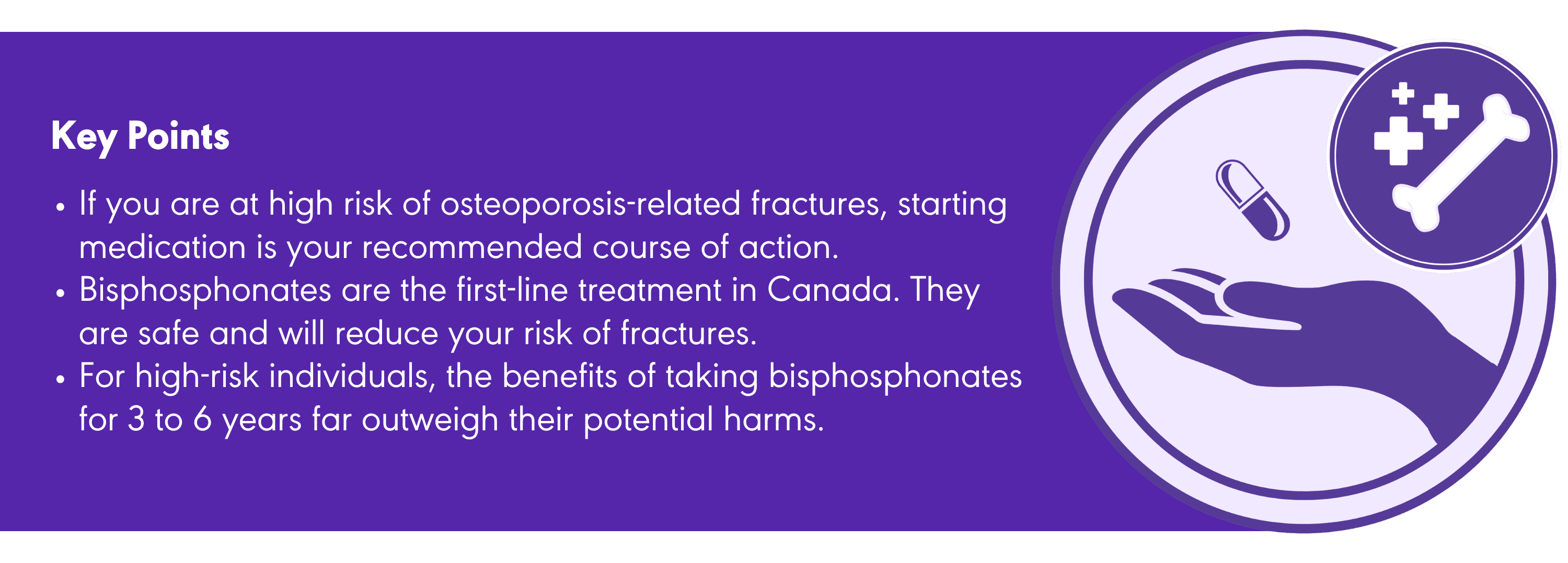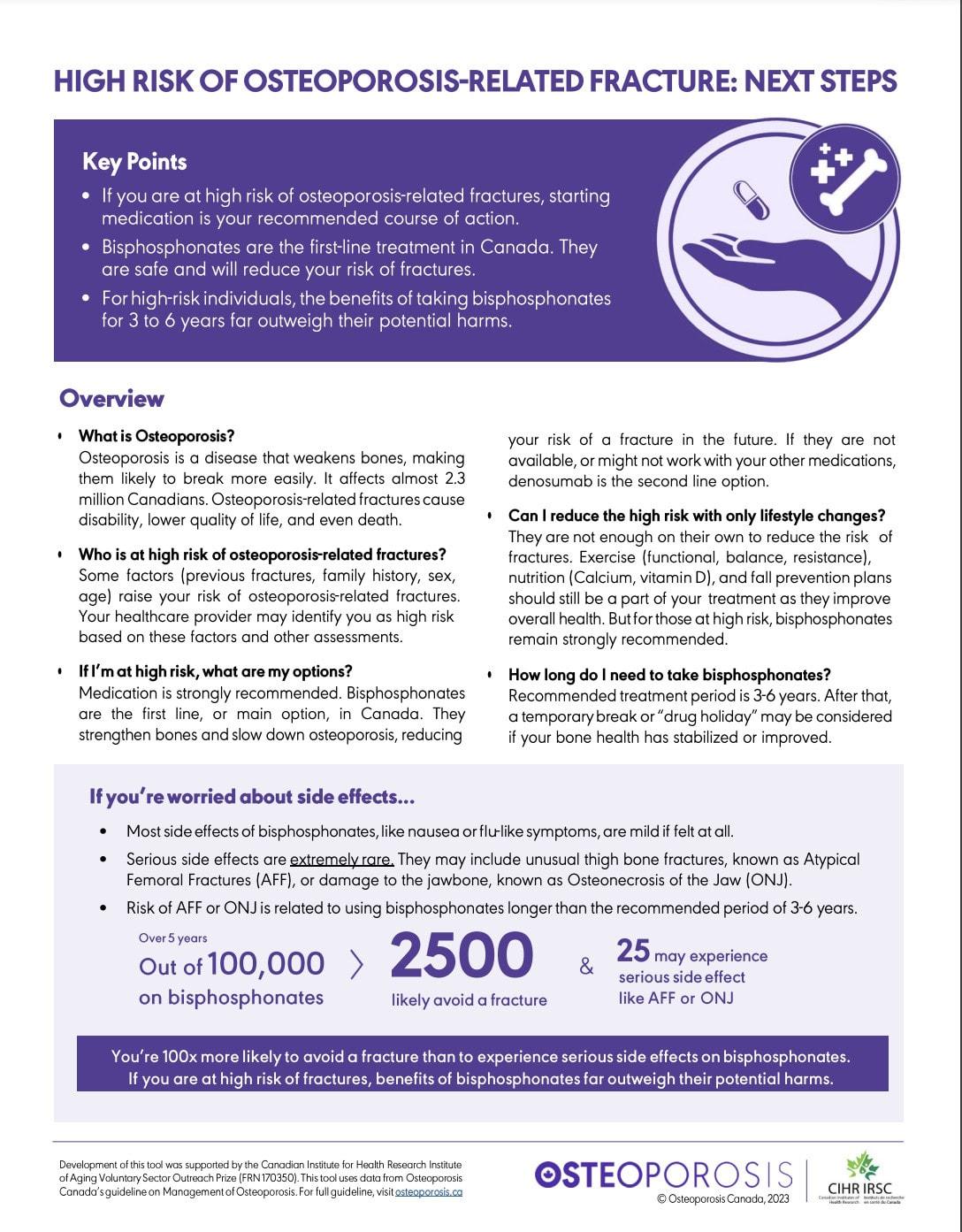
2023 Starting Medication
High Risk of Osteoporosis-Related Fracture: Next Steps
A tool designed for physicians and their patients who are at high risk of fracture and starting medication.

Overview
What is Osteoporosis?
Osteoporosis is a disease that weakens bones, making them likely to break more easily. It affects almost 2.3 million Canadians. Osteoporosis-related fractures cause disability, lower quality of life, and even death.
Who is at high risk of osteoporosis-related fractures?
Some factors (previous fractures, family history, sex, age) raise your risk of osteoporosis-related fractures. Your healthcare provider may identify you as high risk based on these factors and other assessments.
If I’m at high risk, what are my options?
Medication is strongly recommended. Bisphosphonates are the first line, or main option, in Canada. They strengthen bones and slow down osteoporosis, reducing your risk of a fracture in the future. If they are not available, or might not work with your other medications, denosumab is the second line option.
Can I reduce the high risk with only lifestyle changes?
They may not enough on their own to reduce the risk of fractures. Exercise (functional, balance, resistance), nutrition (Calcium, vitamin D), and fall prevention plans should still be a part of your treatment as they improve overall health. But for those at high risk, bisphosphonates remain strongly recommended.
How long do I need to take bisphosphonates?
Recommended treatment period is 3-6 years. After that, a temporary break or “drug holiday” may be considered if your bone health has stabilized or improved
If you’re worried about side effects…
- Most side effects of bisphosphonates, like nausea or flu-like symptoms, are mild if felt at all.
- Serious side effects are extremely rare. They may include unusual thigh bone fractures, known as Atypical Femoral Fractures (AFF), or damage to the jawbone, known as Osteonecrosis of the Jaw (ONJ).
- Risk of AFF or ONJ is related to using bisphosphonates longer than the recommended period of 3-6 years.

You’re 100x more likely to avoid a fracture than to experience serious side effects on bisphosphonates. If you are at high risk of fractures, benefits of bisphosphonates far outweigh their potential harms.
Development of this tool was supported by the Canadian Institute for Health Research Institute of Aging Voluntary Sector Outreach Prize (FRN 170350). This tool uses data from Osteoporosis Canada’s guideline on Management of Osteoporosis. For full guideline, visit osteoporosis.ca.

